Creating a flourishing garden can feel like an overwhelming task, especially if you’re dealing with shaded areas. However, don’t be disheartened! Shade gardens can be just as beautiful and vibrant as sunlit ones, thanks to the myriad of beautiful bulbs that thrive in lower light conditions.
This guide will take you through an array of shade garden bulbs, discussing their unique characteristics, care requirements, and the beauty they can bring to your green space.
Camassia
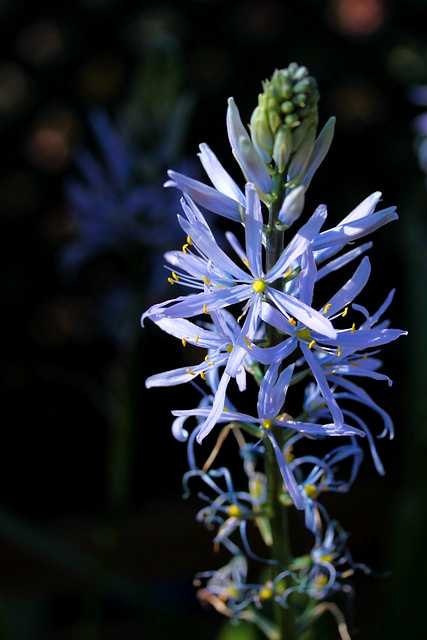
Camassia, commonly known as quamash, is an exquisite bulb that produces tall spikes adorned with star-shaped flowers. These striking blooms, which can be blue, white, or purple, typically rise above lush green foliage, creating a stunning contrast that brightens up shade gardens. They thrive in mildly moist, well-drained soil and prefer partial to full shade, making them an ideal choice for woodland gardens.
What sets Camassia apart is its robust nature; it is not only drought-tolerant once established, but it also adapts well to a range of growing conditions. Plant these bulbs in clusters for a more dramatic effect, and as a bonus, they are praised for attracting pollinators, such as bees and butterflies. Camassia is also deer-resistant, which can be a significant advantage if you’re dealing with wildlife in your area. Their blooming period in late spring to early summer brings a delightful pop of color just when the garden might need it the most.
Checkered Lily
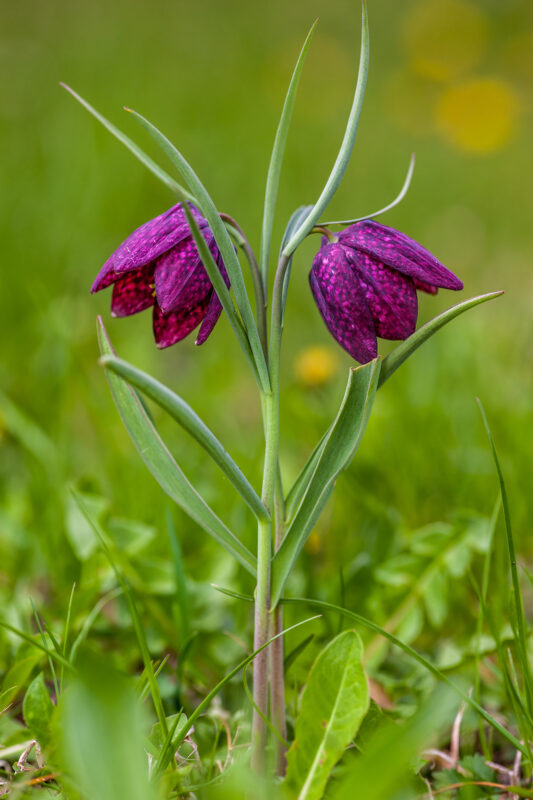
The Checkered Lily, or Fritillaria meleagris, is a charming and unique addition to any shade garden. Renowned for its distinctive checkered pattern, this bulb produces bell-shaped flowers in hues of purple, white, and sometimes a striking mix. These hardy little gems prefer moist, well-drained soil and partial shade, making them perfect for areas that may not receive direct sunlight.
These flowers’ uniqueness doesn’t just stop at their appearance; their low profile and delicate features lend an air of elegance to any garden. Checkered Lilies typically bloom from mid-spring to early summer, creating a natural carpet of colors at a time when many other flowers are just starting to wake from their winter slumber. Grouping them together will enhance their visual impact, and their natural inclination to self-seed can lead to delightful surprises in subsequent years.
Common Bluebell
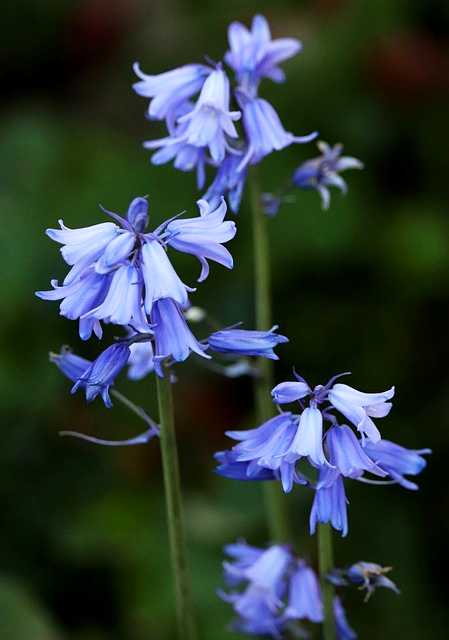
Common Bluebells (Hyacinthoides non-scripta) are a beloved favorite among gardeners who appreciate nature’s serene beauty. Known for their enchanting, nodding blue flowers, these bulbs form expansive carpets of color that can transform a shady area into a picturesque sight reminiscent of enchanting woodland scenes. Plant them in well-drained soil, and you will watch as they gracefully spread over time, thriving in the dappled light cast by trees.
These flowers bloom in late spring and attract a wide array of pollinators, including honeybees and bumblebees, making them a fantastic choice for those who desire a more biodiverse garden. Their vibrant blue hue pops against the greens of the surrounding foliage and offers a charming contrast to the emerging spring landscape. Moreover, they are quite adaptable and can even thrive in slightly alkaline soils, making them easy to fit into many garden designs.
Crocus
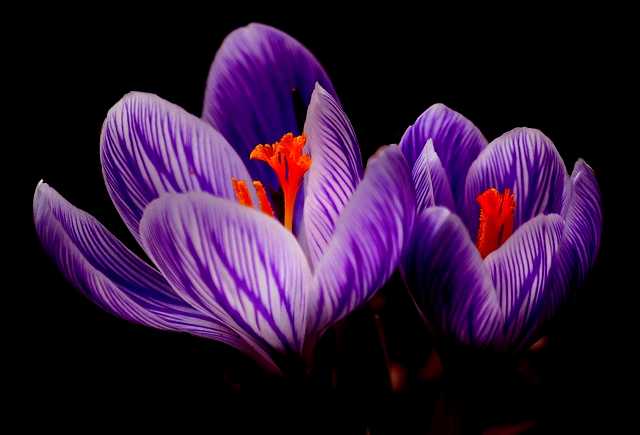
Crocus are among the first bulbs to bloom, often pushing their way through the remnants of winter snow to announce the arrival of spring. These hardy bulbs are available in a dazzling array of colors, from yellows and whites to deep purple and blue. They thrive in sunnier spots but are equally adaptable to light shade, making them a versatile choice for any garden.
The key to successfully growing crocus in a shaded location is to find areas with light dappled shade, where they can receive a few hours of sunlight each day. These cheerful flowers bloom early in the season, typically from February to April, offering a much-needed burst of joy after winter. Plant Crocus bulbs in clumps for a more impactful presentation and consider combining different varieties to enhance the enchanting tapestry of colors. Plus, they are excellent for naturalizing, meaning they can return year after year, providing enduring beauty.
Glory of the Snow
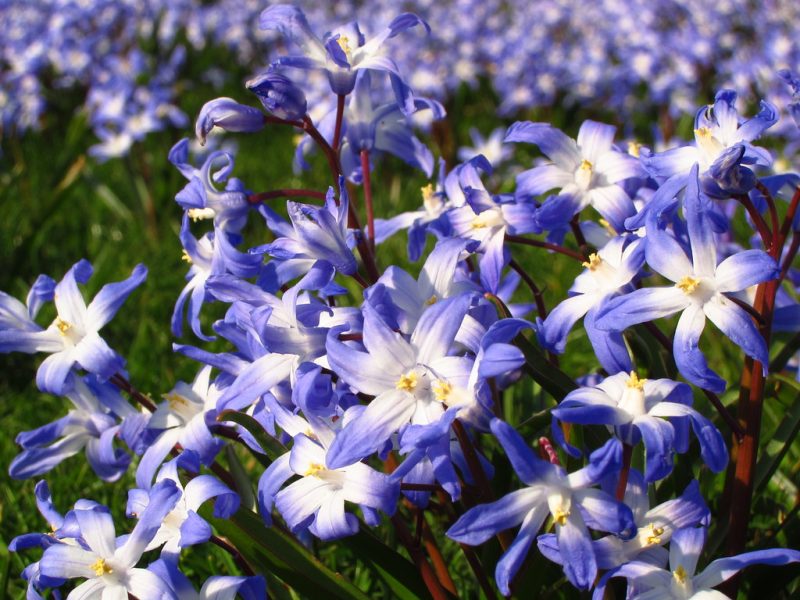
As the name suggests, Glory of the Snow (Chionodoxa luciliae) brings the feeling of spring’s glory to the early part of the year. These delightful little bulbs produce bright blue flowers with white centers, often blooming while there’s still snow on the ground. They’re a perfect option for shaded areas in your garden, as they’re well-suited to dappled sunlight to partial shade.
These bulbs are small yet resilient, typically growing in rocky or woodland areas, showing a preference for well-drained soil. Glory of the Snow blooms from late winter to early spring, creating delightful clusters that brighten up any shaded spots. Because they multiply easily, they create a magnificent display over time, providing an abundance of visual appeal. Plant them in groups for maximum effect, and enjoy watching these charming flowers draw in bees and other pollinators as they emerge from their winter dormancy.
Lenten Rose
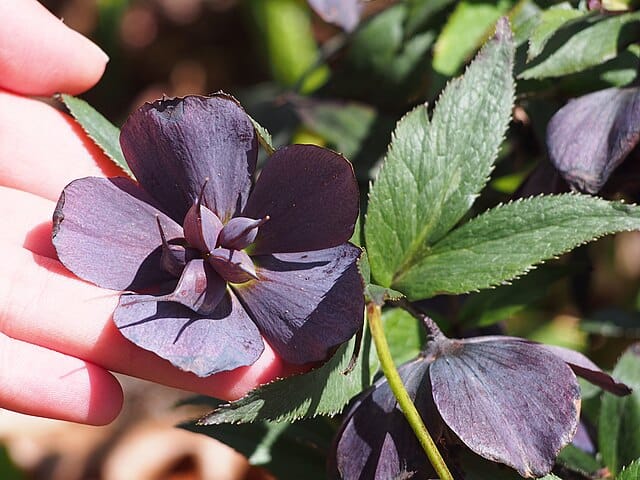
Considered one of the first flowers to bloom in early spring, the Lenten Rose (Helleborus orientalis) is a stunning choice for shaded gardens. Known for its leathery evergreen leaves and beautiful, nodding flowers, this plant adds structural interest and color even in the bleakest months. The flowers come in various colors ranging from deep purple to pastel pink and white, often featuring a striking marbling pattern.
Lenten Roses thrive in rich, well-drained soil and prefer partial to full shade, making them exceptional champions in darker garden corners. While they can take a few years to establish, they reward your patience with resilience and beauty as they mature. Additionally, they bloom from late winter through spring, sustaining color in your garden while other plants are still awakening. Since they are also deer-resistant, they hold the added benefit of being less susceptible to wildlife disturbances.
Lily of the Valley
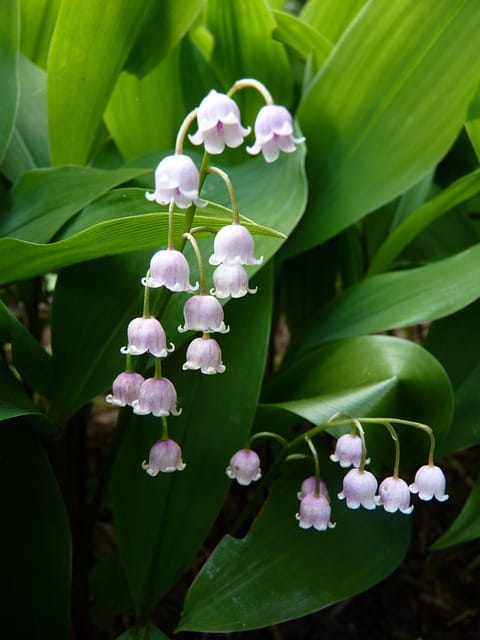
Lily of the Valley (Convallaria majalis) is a classic shade garden bulb with timeless appeal. This perennial plant is famous for its sweetly fragrant, delicate white flowers that dangle from graceful stems, giving a fairy-tale feel to any garden. It flourishes in well-drained, humus-rich soil and tolerates full shade, making it perfect for those shadowy corners of your outdoor space.
This bulb not only provides lush green foliage but also flourishes with beautiful blooms between April and May. Planting Lily of the Valley in clumps helps create elegant drifts of white, especially effective in woodland settings. One thing to note is that this plant can be invasive if not managed properly, so keep an eye on its spread if you’re looking for a more contained garden layout. With its graceful blooms and intoxicating scent, this bulb is a must-have for any shade gardener.
Red Spider Lily
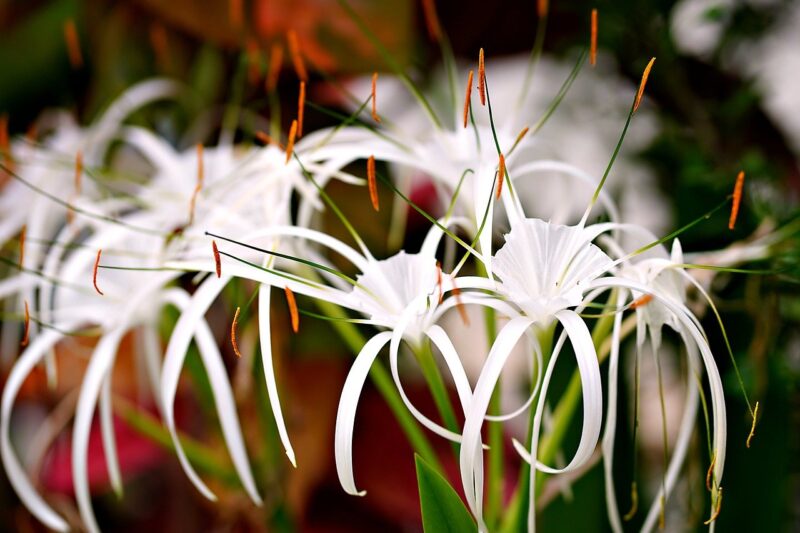
The striking Red Spider Lily, or Lycoris radiata, adds a dramatic flair to your shade garden. With its long, slender petals that curl back to create a unique spidery effect, this bulb embodies intrigue and beauty. Known for its rich red color, the Red Spider Lily blooms during late summer, perfectly complementing the earlier blooms of spring and early summer flowers.
While these bulbs prefer full sun, they can thrive in partial shade as long as they receive enough light during the day. Red Spider Lilies also enjoy well-drained soil, and their unusual flowering time means they can provide color when many other plants have started to fade. Their natural tendency to spread makes them a wonderful option for long-lasting beauty, and like many bulbs, they add interest by attracting hummingbirds, making your garden a lively, vibrant space.
Siberian Squill
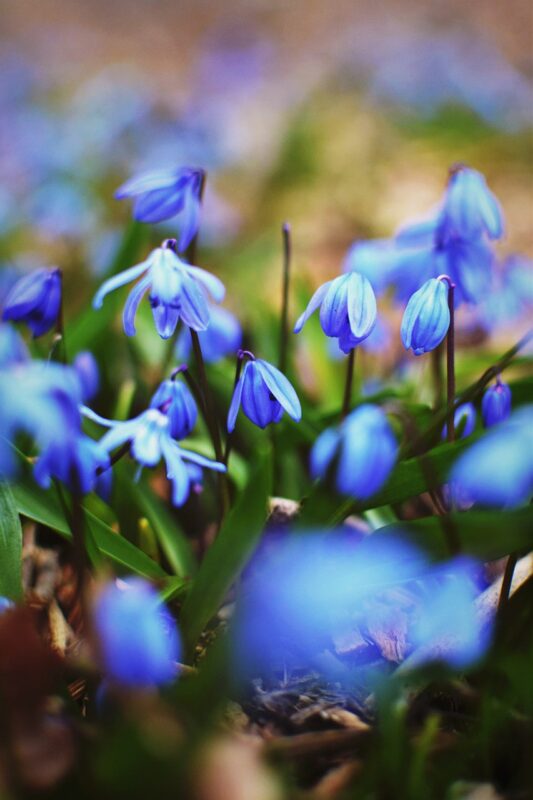
Siberian Squill (Scilla siberica) is a delightful addition to any shade garden, boasting charming blue flowers that arise in early spring. These hardy little bulbs are perfect for naturalizing and can easily cover a landscape with their stunning blue hues. They thrive in well-drained soil and are forgiving when it comes to light conditions, preferring partial to full shade.
As one of the earliest bloomers, Siberian Squills produce a delightful carpet of colors that can herald spring long before many other flowers awaken. Their low-growing nature makes them perfect for planting under larger plants or trees, filling the gaps with delightful blue blooms. Plus, these bulbs spread easily, creating vibrant colonies that can last for years, drawing in bees and other beneficial pollinators to your garden.
Snowdrops
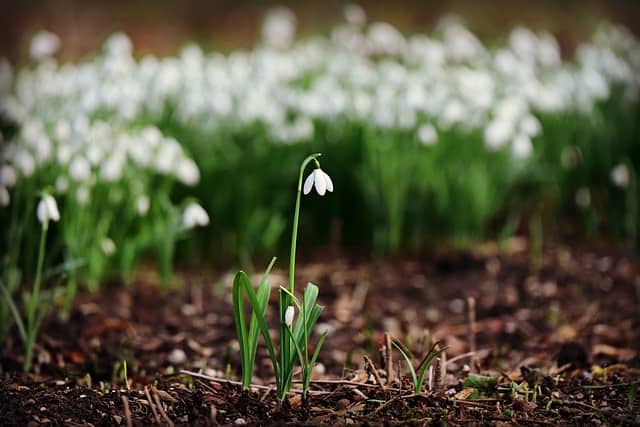
Snowdrops (Galanthus nivalis) are one of the first signs of spring, often poking through the snow to delight gardeners eager for the warmer months. These small yet mighty bulbs feature drooping white flowers that signal hope and renewal. They flourish in any well-drained soil and prefer to be in light shade or full shade, making them a fantastic choice for those shaded areas in your garden.
Most commonly found blooming in late winter to early spring, snowdrops provide a significant boost to any garden looking to shake off winter’s chill. Their elegance and simple beauty make them a great companion for other early bloomers. Snowdrops multiply over time, providing not just individual flowers but also charming clusters that create a remarkable visual impact. Plant them in drifts for an enchanting display that can peacefully coexist with later-blooming plants.
Virginia Spring Beauty

Virginia Spring Beauty (Claytonia virginica) is a wonderful addition to shade gardens, celebrated for its delicate pink and white flowers that bloom in early spring. With its sweet, star-shaped blooms and attractive foliage, this plant brings a gentler elegance to shaded spaces. Preferring moist, well-drained soils and dappled sunlight, it thrives in woodland settings where it can flourish under the protection of taller plants.
Virginia Spring Beauty can efficiently create a stunning carpet effect when planted in clusters, making it an excellent choice for naturalized areas or gardens designed to mimic wildflower meadows. Its flowers attract a variety of pollinators, including bees and butterflies, enhancing the biodiversity of your garden. With their beautiful blooms from March to May, these bulbs breathe life and charm into shaded areas, proving that even lower-light spots can be home to spectacular displays.





